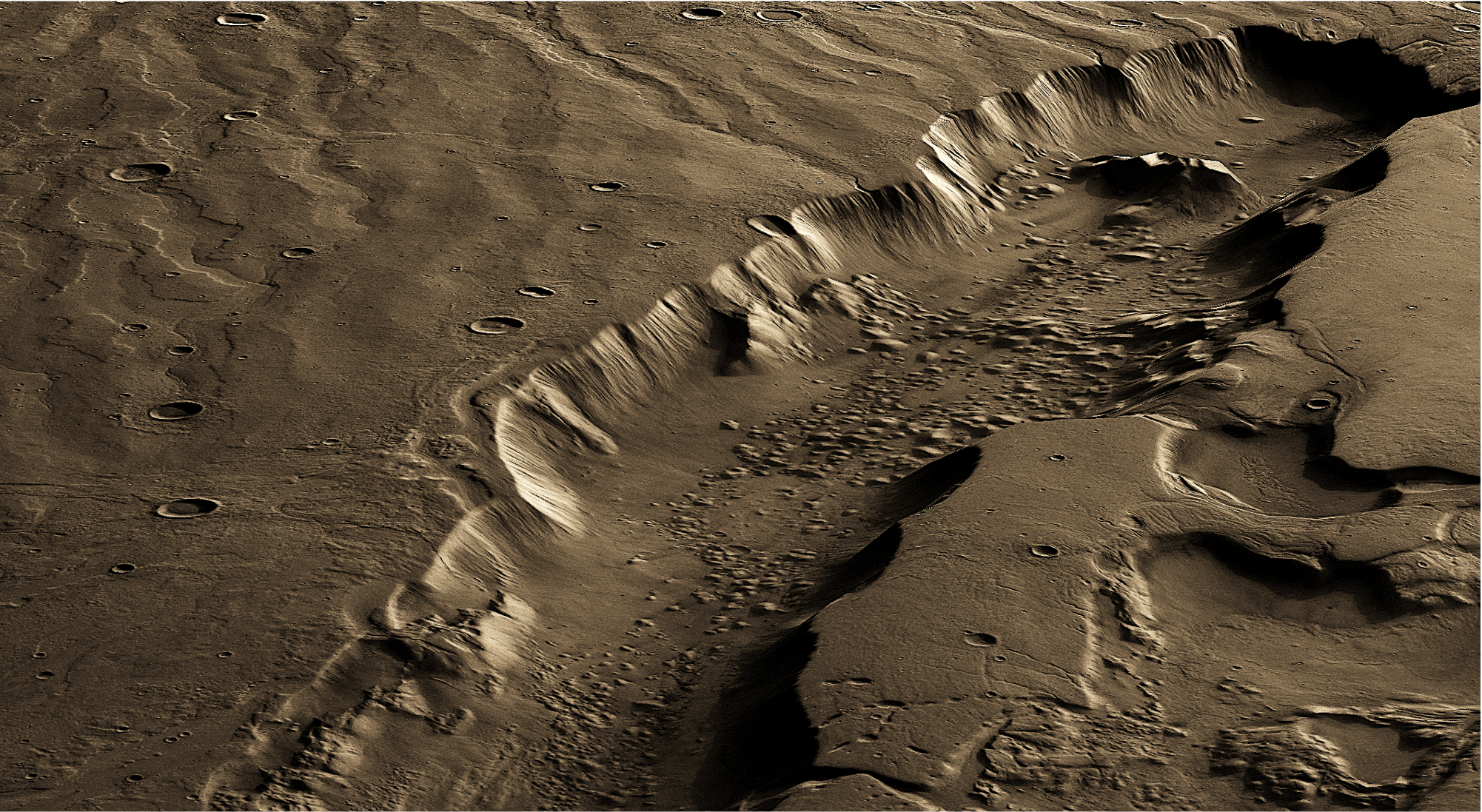Life on Mars: Search deeper!
Has Mars ever had a surface that is friendly to life? Planetary scientists are struggling to find enough remnants of a former atmosphere. Even if one considers that Mars may have lost a large part of its oxygen and water to space, gaps remain – even for the past.
On the other hand, there are of course the valleys, dry waters and river systems still visible today, into which water would have had to have flowed billions of years ago. And if the water on the surface was not frozen, the temperatures must have been pleasant. Even if this is not the case, the sun was much less bright and warm back then.
A new study published in the journal Science Advances could now help to solve the so-called paradox of the faint young sun – a key question in Mars science that still exists.
“Even if greenhouse gases such as carbon dioxide and water vapor are pumped into the early Martian atmosphere in computer simulations, climate models still struggle to support a Mars that is warm and humid in the long term,” says lead author Lujendra Ojha of Rutgers University New Brunswick. “I and my co-authors suggest that the faint young solar paradox could be at least partially solved if Mars produced much geothermal heat in its past”.
On rocky planets such as Mars, Earth, Venus and Mercury, heat-producing elements such as uranium, thorium and potassium generate heat through radioactive decay. In such a scenario, liquid water can be produced by melting at the bottom of thick ice sheets, even if the sun was weaker than now. On Earth, for example, geothermal heat forms subglacial lakes in areas of the West Antarctic ice sheet, Greenland and the Canadian Arctic. It is likely that a similar melting can help explain the presence of liquid water on the cold, frozen Mars 4 billion years ago.
The scientists examined various Mars data sets to find out whether warming by geothermal energy would have been possible in the Noachian age. They showed that the conditions necessary for subterranean melting would have been omnipresent on ancient Mars. Even if Mars had had a warm and humid climate 4 billion years ago, with the loss of the magnetic field, the thinning of the atmosphere and the subsequent drop in global temperatures over time, liquid water might have been stable only at great depths later on. Therefore, life, if it ever originated on Mars, could have followed the liquid water to greater and greater depths.
“At such depths, life could have been sustained by hydrothermal (heating) activity and rock-water reactions,” says Ojha. “The subsurface could therefore represent the longest living habitable environment on Mars”. Future Mars missions are therefore best looking for it under their feet.
